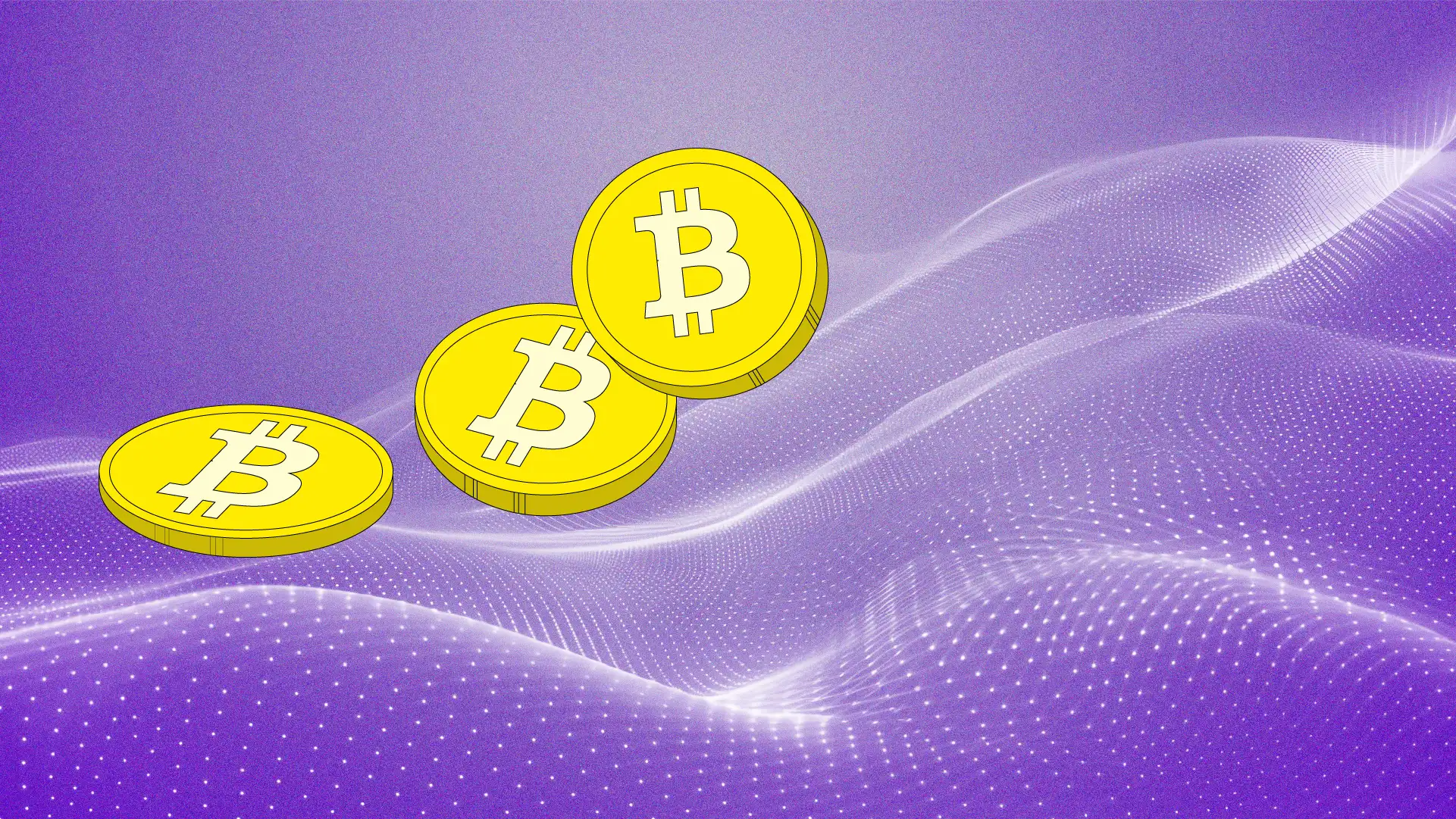- 4 reasons it will recover and hit ATH
- Does Robert Kiyosaki’s Bullish 2025 Bitcoin Prediction Make Sense?
- El Salvador to Scale Back Bitcoin Efforts Under $1.4 Billion IMF Deal
- Ethereum Set To Move Up Against Bitcoin, According to Analyst Benjamin Cowen – Here’s His Outlook
- Tesla, Inc. (TSLA) Among Companies Hoarding Bitcoin Like There’s No Tomorrow
Key Takeaways
- Bitcoin adoption is emerging as a catalyst for boosting share prices, fueling growth in equities such as MicroStrategy (MSTR) and Marathon Digital Holdings (MARA).
- Altcoins throughout the years have often mirrored Bitcoin’s trajectory.
- Stablecoins like USDt are evolving into a key medium of exchange and a source of global liquidity, strengthening the US dollar’s dominance and extending its geographical influence.
- Bitcoin correlations influence diverse asset classes and market trends globally.
Bitcoin is the first blockchain to shape trends across financial markets. BTC’s dominance as a leading asset was reaffirmed after surpassing $100,000 in December 2024.
Bạn đang xem: 3 Correlated Asset Classes with Bitcoin
In January 2025, questions surfaced about whether emerging asset classes are becoming attractive opportunities for speculation and if they offer insights into Bitcoin’s future trajectory.
This article delves into Bitcoin’s connections with traditional assets like the stock market and equities, older altcoins such as Ether (ETH), Litecoin (LTC), and Dogecoin (DOGE) , and companies strategically tied to Bitcoin’s growth, including mining firms like Marathon Digital Holdings, which hold Bitcoin reserves.
Which 3 Asset Classes are Positively Correlated to Bitcoin?
Bitcoin’s role as the market leader ensures it remains the primary driver of financial trends within the financial ecosystem operating on a Bitcoin standard. The influence extends beyond direct price moveme nts, shaping the performance of various interconnected assets.
As Bitcoin adoption grows, its impact becomes evident in three key areas:
- Equities: Companies such as MicroStrategy (MSTR) and Marathon Digital Holdings (MARA), directly tied to Bitcoin price behaviour, follow Bitcoin’s trend and are set to outperform during this Bitcoin bull market in 2025.
- Altcoins: Long-standing cryptocurrencies like ETH, LTC, and DOGE have historically mirrored BTC’s trajectory during bull markets. However, since 2019 and 2022, respectively, both ETH and LTC have seen a steady decline in correlation with BTC. This divergence presents speculative opportunities for potential rebalancing, especially with the possibility of a LTC ETF approval on the horizon and an ETH ETF already approved.
Litecoin’s LTC/BTC ratio has gradually decreased over the years, highlighting its distinct behavior compared to Bitcoin.
Despite enduring harsher bear markets than Bitcoin, Litecoin has demonstrated resilience, weathering numerous challenges to remain a key player in the crypto space.
With the anticipation of institutional investment following an ETF approval in 2025, many expect the digital silver (Litecoin) to approach a closer ratio with digital gold (Bitcoin), potentially nearing 200:1 or even 100:1. The current ratio is
Dogecoin (DOGE), on the other hand, benefits from being merge-mined with Litecoin, which provides added network security and synergy. Historically, DOGE has performed remarkably well during Bitcoin bull markets, further reinforcing its unique position within the ecosystem.
- Stablecoins: With rising demand for transactional liquidity, stablecoins like USDt play a massive role in facilitating global Bitcoin and crypto adoption, further integrating into financial systems reliant on Bitcoin markets.
Understanding these correlations underscores the broader opportunity landscape in assets tied to Bitcoin. MicroStrategy, Marathon Digital, and Litecoin represent top performers among these correlated assets, offering unique avenues for investors to benefit from Bitcoin’s movements.
As Bitcoin continues to lead, its network effects ripple across the financial ecosystem, strengthening these key correlations and paving the way for long-term growth.
Bitcoin and the Stock Market: Exploring a 15-Year Correlation Since 2008’s Quantitative Easing
Since the introduction of quantitative easing (QE) after the 2008 recession, Bitcoin has emerged as a unique tool that responds to money printing and inflationary pressures.
QE is a monetary policy used by central banks to stimulate the economy when traditional methods, like lowering interest rates, are no longer effective.
Over the past 15–16 years, Bitcoin has shown a notable correlation with the S&P 500. As the S&P rises, Bitcoin often mirrors this trend, highlighting its increasing integration into the wider financial landscape. Despite occasional deviations, the relationship between Bitcoin and the stock market has largely held steady, reinforcing Bitcoin’s role as a speculative asset influenced by macroeconomic factors.
Bitcoin’s Evolving Correlations and the Role of ETFs in 2025
The launch of spot Bitcoin ETFs marked a huge moment for Bitcoin, becoming the most successful ETF debut in history with over $108 billion in AUM within a year. Major players like BlackRock, Fidelity, and Ark Invest have made regulated Bitcoin exposure accessible to traditional markets, driving significant capital inflows.
Weighted crypto index ETFs are reshaping correlations by offering diversified exposure, capturing growth across Bitcoin, Ethereum, and emerging protocols. These developments, coupled with Bitcoin’s halving cycles and macroeconomic factors like interest rate policies, are redefining asset relationships and driving the next wave of crypto adoption.
Industry-by-Industry Breakdown
Bitcoin and Equities
Xem thêm : Strive files for “Bitcoin Bond” ETF tied to MicroStrategy holdings
Bitcoin’s interplay with equities, particularly tech-related stocks and companies linked to Bitcoin, had deepened since 11 August 2020, when Microstrategy entered the space. Key players now include Tesla, Nvidia front the Magnificent 7 as well as MicroStrategy, each with distinct roles:
Tesla (TSLA)
Tesla’s decision to purchase $1.5 billion in Bitcoin, illustrated in the chart above, in early 2021 highlighted the potential for corporations to hold Bitcoin as a hedge. While Tesla later paused Bitcoin payments, its price movements remain sensitive to Bitcoin’s performance. Tesla’s 2025 outlook ties closely to Bitcoin’s adoption narratives.
Nvidia (NVDA)
Nvidia’s production of GPUs, essential for mining operations, ties the company closely to Bitcoin’s demand cycles. In bull markets, Nvidia normally sees large growth, reflecting the increase in Bitcoin’s hashrate as miners expand operations.
If Nvidia strengthens its synergy with Bitcoin and the US adopts Bitcoin as a Strategic Bitcoin Reserve (SBR), Nvidia could gain a competitive edge by holding Bitcoin. Backing its treasury with a pristine hard asset like Bitcoin would likely enhance market confidence, potentially boosting its market share and solidifying its position as a leader in the tech and crypto industries leapfrogging Apple.
MicroStrategy (MSTR)
MicroStrategy, under Michael Saylor‘s leadership, has established itself as one of the largest corporate holders of Bitcoin, with its stock often acting as a proxy for Bitcoin investment. Notably, Saylor has adopted a unique strategy to maximize Bitcoin accumulation without selling existing holdings.
By selling equity in MicroStrategy, Saylor reinvests the proceeds into purchasing more Bitcoin. This approach allows the company to strengthen its Bitcoin reserves without liquidating any of its existing holdings, ensuring a long-term position in the Bitcoin market. This strategy contributes to the growing scarcity of Bitcoin.

With a fixed supply of 21 million coins and approximately 1 million of those coins locked for another century due to the mining reward schedule, the supply is increasingly constrained. As demand rises and institutional adoption grows, the diminishing availability of Bitcoin is likely to drive further price squeezes, solidifying its reputation as a scarce, pristine asset making MSTR a highly correlated asset to Bitcoin price behaviour.
Bitcoin and Gold
Bitcoin and gold share a complex relationship. Both are seen as stores of value, but their correlation fluctuates depending on economic conditions. Gold’s stable performance often contrasts Bitcoin’s volatility, making it an anchor during turbulent periods.

- 2025 trends: As inflation fears moderate, gold’s returns may stabilize, while Bitcoin’s speculative nature continues to drive higher returns. Gold provides a hedge, but Bitcoin’s digital narrative attracts younger investors.
- Correlation metrics: Historical data shows periods of weak correlation (around 0.21), with brief spikes during market crises.
Gold has notably low correlation values with Bitcoin and other cryptocurrencies, as well as traditional financial assets like the S&P 500. This low correlation makes it a diversification tool in portfolios alongside riskier assets like cryptocurrencies or equities.
Bitcoin and Altcoins
Altcoins like ETH, LTC, and DOGE have weathered multiple market cycles and can be seen as altcoins that can help increase total Bitcoin holdings if held at the correct times of a 4 year Bitcoin cycle, establishing their resilience:
Ethereum
Ethereum’s robust ecosystem and transition to proof-of-stake have strengthened its link to Bitcoin. While Bitcoin leads in dominance, Ethereum benefits from utility-driven demand, especially in decentralized finance (DeFi).
With layer-2 solutions like Hemi being developed, Ethereum’s scalability and efficiency are reaching new heights. These layer-2 networks aim to alleviate congestion and high transaction fees on Ethereum’s mainnet by processing transactions off-chain while maintaining the security and decentralization of the Ethereum blockchain.
This progress is crucial for supporting the explosive growth of decentralized finance (DeFi), non-fungible tokens (NFTs), and gaming ecosystems that rely on fast and cost-effective transactions.
Litecoin
Litecoin’s utility as a testing ground for Bitcoin upgrades is one of its defining characteristics. Innovations such as Segregated Witness (SegWit) and the Lightning Network were implemented on Litecoin before being adopted by Bitcoin, showcasing its importance as a pioneer for blockchain advancements.
Additionally, Litecoin’s faster block times (2.5 minutes compared to Bitcoin’s 10 minutes) make it a practical choice for transactions, further reinforcing its utility as a payment-oriented cryptocurrency.
Its current role in the market is also tied to its strong correlation with Bitcoin. However, this relationship has evolved over time. While Litecoin has followed Bitcoin’s macro trends, its LTC/BTC ratio has steadily declined since 2019, highlighting its distinct price behavior and the challenges of maintaining parity with Bitcoin’s dominance.

Yet, Litecoin’s resilience through harsh bear markets as digital silver and its decentralized, censorship-resistant design position it as a long-term contender in the cryptocurrency space.
Xem thêm : MicroStrategy Sinks After Nasdaq 100 Inclusion: Bitcoin Bet Under Fire?
As the potential for a Litecoin ETF looms on the horizon, institutional interest could reshape its market attraction. A successful ETF would likely attract new capital inflows, enhancing Litecoin’s visibility as “digital silver” and possibly narrowing its LTC/BTC ratio.
Dogecoin
Initially a memecoin, Dogecoin has matured, maintaining high sensitivity to Bitcoin’s moves. Its community-driven value and speculative appeal align with Bitcoin’s cycles.
Dogecoin’s integration with Litecoin via merge mining has strengthened its technical foundation and network security, adding credibility to its long-term viability. Its vibrant and highly active community has also played a role in driving adoption and maintaining market enthusiasm.
For traders and investors seeking high-risk, high-reward assets, Dogecoin has proven itself time and time again to be a top performer, particularly during Bitcoin bull runs, where its speculative appeal aligns perfectly with market momentum. Its history as a “joke” has become a testament to its unexpected resilience and profitability.
Emerging Narratives
The Role of Miners
Mining companies, including Marathon Digital Holdings (MARA) and Riot Platforms, are direct beneficiaries of Bitcoin’s price appreciation. Increased prices drive mining profitability, making these equities highly correlated to Bitcoin:
- Profit margins: Mining firms thrive in bull markets as energy costs stabilize and Bitcoin prices rise.
- Leverage effect: These companies often deliver outsized returns compared to Bitcoin during rallies due to their operational exposure.

Conclusion
In the next Bitcoin bull run, assets that stand out as prime opportunities to outperform Bitcoin include Ethereum (ETH), Litecoin (LTC), Dogecoin (DOGE) in the altcoin market along with equities like MicroStrategy (MSTR) and Marathon Digital Holdings (MARA).
MicroStrategy’s strategic Bitcoin accumulation and leveraged exposure make its stock a key proxy for Bitcoin’s price movements which is poised to outperform Bitcoin during the Bitcoin bull cycle rally. These assets offer unique avenues to maximize returns in the evolving crypto landscape.
FAQs
Why is Litecoin compared to Bitcoin?
Litecoin is often called “digital silver,” reflecting its similar but more volatile price movements to Bitcoin.
How do stablecoins relate to Bitcoin?
Stablecoins like USDt enable liquidity in Bitcoin markets and indirectly reinforce the dollar’s global dominance.
What industries show strong Bitcoin correlations?
Key industries include cryptocurrency mining, blockchain-related equities, and altcoins with established histories like Litecoin and Ethereum.
Disclaimer:
The information provided in this article is for informational purposes only. It is not intended to be, nor should it be construed as, financial advice. We do not make any warranties regarding the completeness, reliability, or accuracy of this information. All investments involve risk, and past performance does not guarantee future results. We recommend consulting a financial advisor before making any investment decisions.
Was this Article helpful?
Nguồn: https://rentersinsurance.cyou
Danh mục: News







